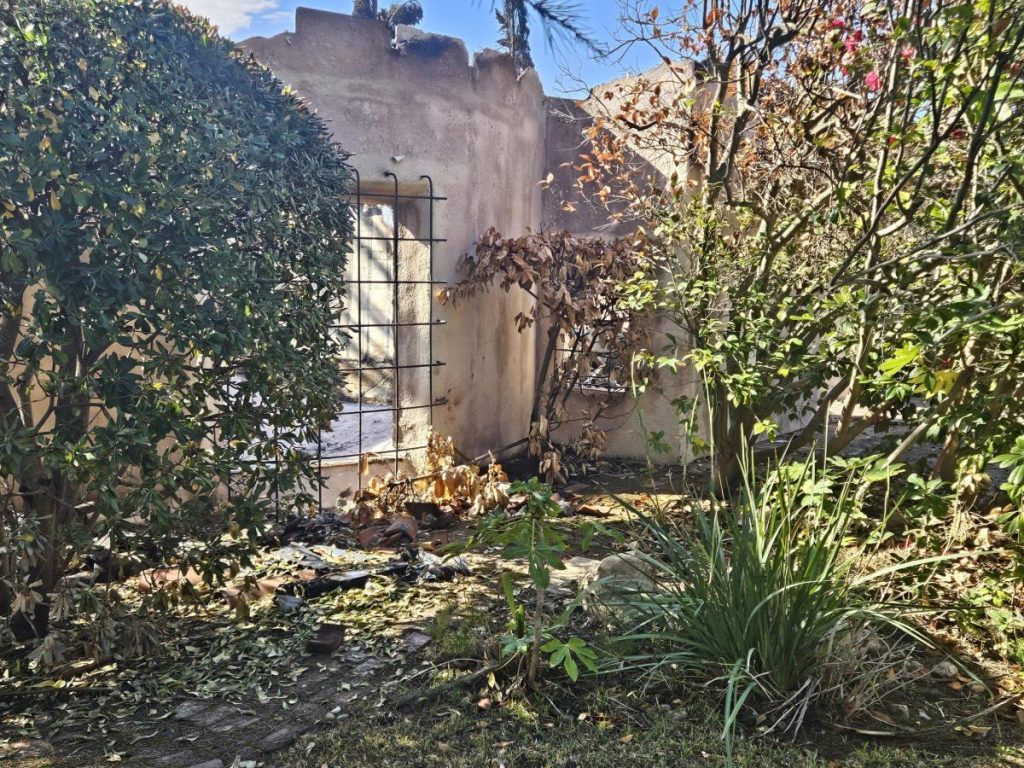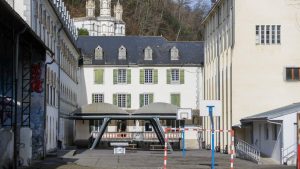
On January 7th, Santa Ana winds up to 100 mph whipped across the San Gabriel Mountains near Los Angeles. A blaze ignited in Eaton Canyon created a shower of embers that rained down on the community of Altadena that destroyed more than 9,000 structures and killed 17 people.

The source of the blaze is still under investigation. Still, some authorities believe that power lines owned by Southern California Edison Power Company may have ignited the Eaton Fire. Turning off the power to some transmission lines is a common practice when high wildfire risk could have overloaded the remaining power lines, leading to the ignition. If true, it demonstrates how complex and challenging it is to deal with wildfire threats to communities.

I recently visited Altadena to see for myself the results of this blaze. I saw the charred ruins of homes surrounded by green trees, blooming flowers, and shrubs.
While the burning chaparral in the San Gabriel Mountains led to the Eaton fire, it was wind blown embers that destroyed most of the houses.

Embers from burning homes created a domino effect, with one burning structure creating the embers that ignited the next home in the neighborhood. Even a portion of downtown Altadena was burned, including multi-story apartments, a bank, stores, and even a middle school.

The conclusion I came away from after viewing the Eaton Fire (as well as numerous other large blazes over the years, like the Camp Fire that destroyed Paradise, the Thomas Fire by Santa Barbara, the Carr Fire by Redding, the Rim and King Fires in the Sierra Nevada and others) is that home hardening is where our efforts for community protection must expand.
Home hardening includes removing flammable vegetation adjacent to homes, putting screens on vents to prevent embers from entering the house, installing a fire-resistant roof, perhaps a rooftop sprinkler system, and cleaning gutters, among other measures. Those actions can make a difference. After the Camp Fire, one analysis found that about 51 percent of the 350 single-family homes in Paradise built to the new codes escaped damage, compared with just 18 percent of the 12,100 homes built before the standards.

The current federal policy of fuel reduction through logging and prescribed burns can enhance fire spread under the extreme conditions and exceptionally high winds that characterize all large blazes. See here and here for example.

One of the problems with federal policy is that a good percentage of all acreage charred by wildfire annually is in non-forested areas. For instance, the plant community burned by the Eaton Fire (and the nearby Pacific Palisades blaze) occurred in Chaparral.

Clearing chaparral or even forested stands, except immediately adjacent to structures, provides no long-term fuel reduction benefit and can lead to regrowth of grasses, which are even more flammable than chaparral.

However, even in regions of the country where forests dominate, logging and prescribed burning can often exacerbate fire spread during extreme fire weather conditions. It’s important to note that all large blazes occur during such conditions with drought, high temperatures, low humidity, and, most importantly, high winds.

I know of no logging or prescribed burns that reduce drought or wind—the primary factors in high-severity wildfire spread.

Logging opens forests to greater wind penetration and drying of surface fuels and soils. Prescribed burns can promote the regrowth of fine fuels like grasses and enhance fire spread.

The idea that dead trees increase the spread of fire is another myth. It is fine fuels that support wildfire. The fact that snags remain after a high-severity blaze is evidence that tree boles seldom burn. By contrast, green trees have more flammable resins in needles, cones, and small branches that support fire spread.
The current policy of fire suppression can contribute to future higher-severity blazes. Instead of fire suppression, allowing existing wildfires to reduce fuels across large landscapes is more effective and efficient. Natural wildfires have fewer negatives than current timber cutting practices, including soil erosion from logging roads, removal of wood biomass, disturbance of sensitive wildlife, increases in weeds, and other negative consequences of forest management.

What we have is an urban fire problem. We can build homes that are resistant to wildfire. We can implement policies that reduce the flammability of the immediate area around structures.

Unless we make such changes in our wildfire policies, we will likely see more unstoppable fires threatening western communities like what occurred in Altadena and Pacific Palisades, California.
Most of the recent blazes in CA have occurred in chaparral and urban areas. Below is a chart created by Bryan Baker of Los Padres Forest Watch.









